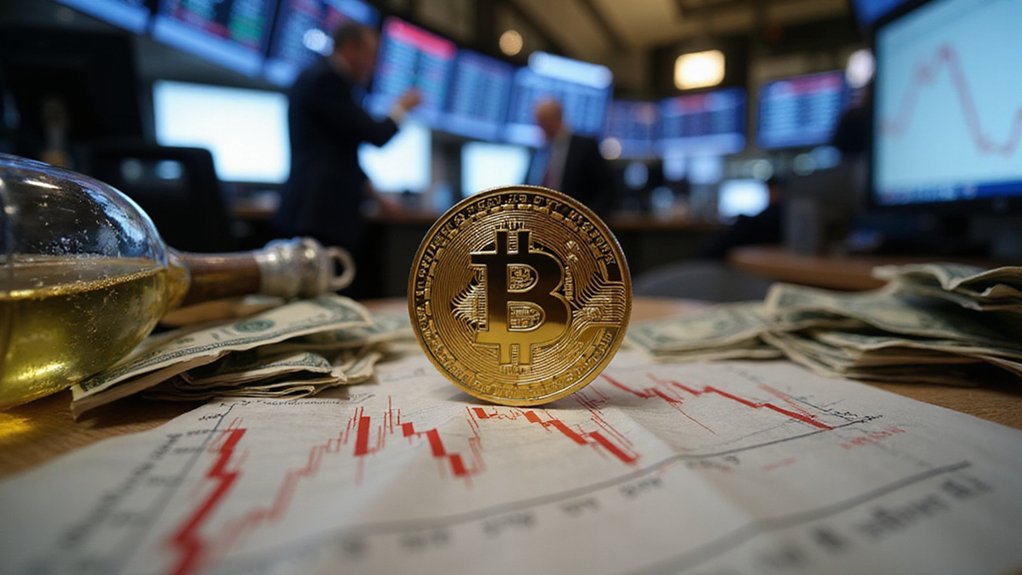As global bond markets teeter on the precipice of unprecedented volatility, Bitcoin appears poised for a remarkable ascent that could fundamentally reshape the asset’s position in the financial ecosystem.
Institutional investors, once skeptical of cryptocurrency’s legitimacy, are increasingly viewing Bitcoin as digital gold—a hedge against the capricious nature of traditional monetary systems now exhibiting worrying signs of stress.
This newfound institutional embrace (evidenced by record-breaking ETF inflows) suggests we may be witnessing the early stages of a paradigm shift in asset allocation strategies.
The numbers tell a compelling story: analyst projections ranging from $120,000 to $130,000 by next quarter reflect growing confidence that Bitcoin’s trajectory will continue upward.
Analyst projections of $120K-$130K by next quarter signal mounting confidence in Bitcoin’s continued ascent.
More ambitious forecasts suggest year-end 2025 values between $150,000 and $200,000, with Standard Chartered’s eyebrow-raising $500,000 prediction representing the bullish extreme.
Contextually, these projections gain credibility when one considers Bitcoin’s current market capitalization relative to gold’s $22 trillion—a gap that simultaneously highlights both opportunity and the asset’s nascent status.
What makes this particular moment unique?
The confluence of post-halving supply constraints, deteriorating confidence in government bonds, and the specters of debt spirals haunting major economies like the US and Japan.
Bitcoin’s underlying consensus mechanism relies on miners solving complex computational puzzles to validate transactions and secure the network without central authority oversight.
Bitcoin’s dual nature—functioning both as speculative asset and safe-haven store of value—has created a curious situation where it benefits from economic turbulence that would typically disadvantage risk-on investments.
The regulatory environment remains a wild card, naturally.
Yet Bitcoin’s fundamental strength, including robust on-chain metrics and increasing control by long-term holders, suggests a resilience that could weather potential regulatory headwinds.
Active traders on Deribit have placed significant bets on Bitcoin reaching $300,000 by June 27, demonstrating extreme optimism despite current price levels.
Market sentiment remains relatively divided with Fear & Greed Index showing a concerning 32, indicating significant fear among investors despite the positive long-term projections.
For investors, the question becomes whether Bitcoin represents the vanguard of a new financial paradigm or merely another bubble in the making.
The answer likely lies somewhere between these extremes—Bitcoin offers genuine utility in an increasingly unstable financial landscape, but its path upward will hardly be linear¹.
¹As financial history repeatedly demonstrates, nothing truly valuable comes without volatility.









